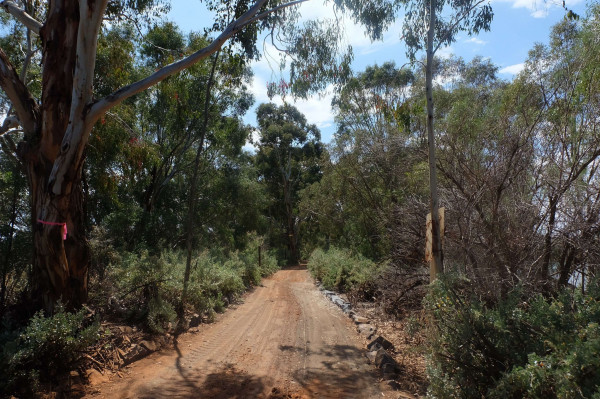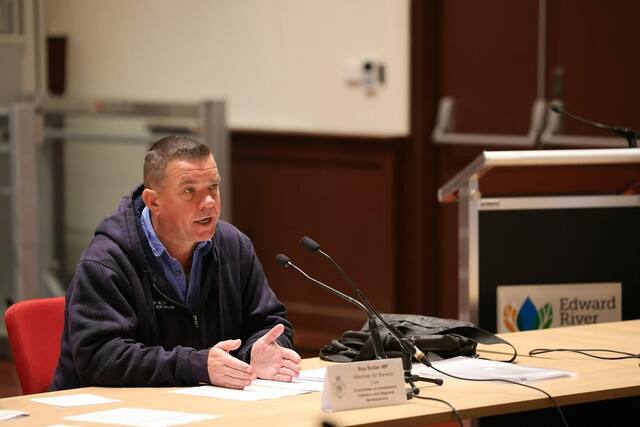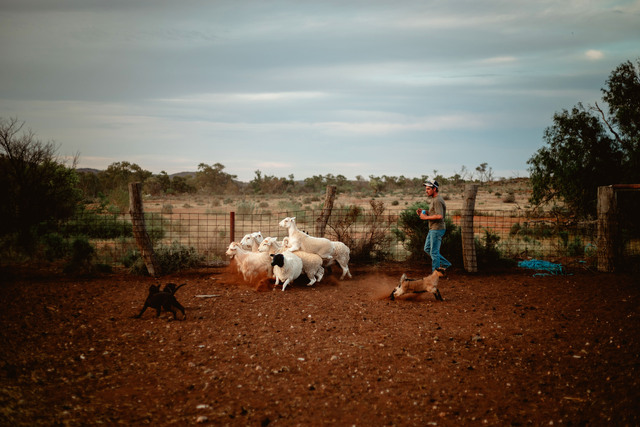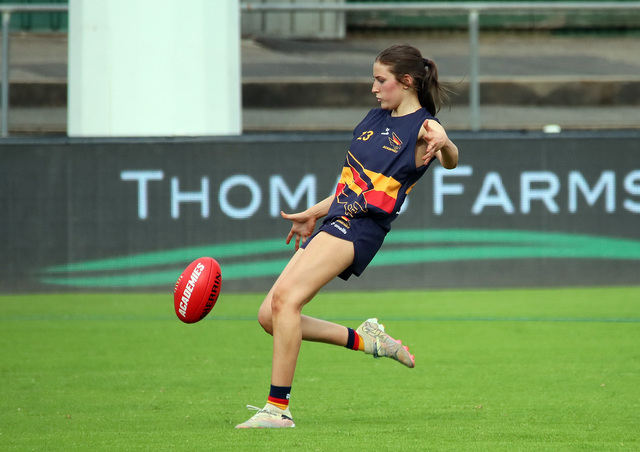THE regeneration of Imperial Lakes, a 145-hectare former Essential Water reservoir site, has been turning heads since Landcare Broken Hill purchased the freehold property in January 2023.
Landcare has a grand plan for Imperial Lakes, with the regeneration to include the creation of an entire nature park and environmental sustainability expo hub.
The integrated environmental site is located less than a kilometre north of the town and is open to all Landcare members.
In the project’s overview and mission statement, it identifies “four core foci: nature conservation, passive recreation, ecotourism, and environmental vocational training and education”.
Imperial Lakes’ Nature Park will feature facilities for walking, running, picnicking and canoeing, alongside a forest walk, an Outback-themed playground, habitat conservation for endangered species, a major arboretum, a bush chapel, hiking and wildlife trails, a maze, reptile sanctuary, art trails and exhibitions, a large native plant propagation nursery, and more.
Robin Sellick, Landcare vice-president, said “it’s really evolving organically. Most of it is being done through volunteers now. We’re just about to go through a round of funding and are in the process of prioritising what we want to do”.
Mr Sellick said that the implementation of the construction and regeneration work was “more organic” than just project-by-project, working geographically and in stages so the park could be open for the public (if they register as a Landcare member) throughout the long process.
“I’d like to say in three years we’ll have the bigger picture finished. But I don’t think so, it’s one of those projects that is never finished; it’ll keep evolving,” he said.
Another major element of the project is community collaboration, with over a hundred partners working to fund the park.
“We’ve got over a hundred partners in this. Some of them are local organisations, some of them national and international organisations. This is a project that’s really got an enormous amount of traction around the country,” he said.
Mr Sellick said that Landcare wants “to take a different approach to how we partner with the local Wilyakali people. All of the signage will use Wilyakali language, as well as to describe plants and animals”.
“We’re really looking for an immersive experience,” he said.
The 1.5 hectare island located in the park’s western lake will be a space for visitors to learn about, and respect, Indigenous culture.
The park also features an LGBTIQA+ garden, with the aim of “creating safe spaces for people within that community”, Mr Sellick said.
The most recent component of the park to be completed is the forest walk, with David Elston, head Broken Hill Landcare ranger, working to add water misters along the path to mitigate fire risk and cool the forest down.
One of the aims of the misting sprinkler system is to bring down the path temperature underneath the tree canopies, with Mr Elston believing he can lower the overall temperature by five degrees.
Mr Elston, alongside Landcare Broken Hill president Simon Molesworth, have been criticised for keeping undergrowth alongside the path as it presents as a fire danger, hence the sprinkling system.
“It’s become quite controversial; Dave and I have both received a lot of criticism,” Mr Molesworth said.
The reason for keeping the undergrowth is the role it plays in the native ecosystem – allowing native animals to raise their young and remain safe from predators.
Mr Elston explained that Willy Wagtails, a native bird, have recently made the park’s undergrowth their home to raise a family, giving the chicks time to learn to fly and mature.
“They’ve never moved from this area because this is their protection,” Mr Elston said.
“People want to clear it. But they don’t understand that by doing that, they’ll kill the birds,” Mr Molesworth said.
Despite some community backlash, Mr Elston said that “so many people want to be a part of this because it’s going to be so big. There’s always been one project in after the other.”
Mr Elston oversees all work on the land, alongside Landcare volunteers who meet every Saturday to aid in the park’s construction; helping with everything from painting to building teepees for the Outback playground.
Mr Molesworth said that “if we can make this work in Broken Hill it will start a real exercise in vocational training, community education and looking at ways of respecting biodiversity and understanding climate change”.
“If it works out here, we want others to take our model and run with it. Every regional centre should have something like this,” he said.
One of the biggest challenges is funding this larger-than-life project, with Mr Molesworth explaining that the project needs larger grants as the costs add up.
“When we took the site, there was no water, no power, no infrastructure,” he said.
Insurance is costly, alongside all construction elements, with one bridge alone being quoted at potentially costing almost six figures.
“In one sense, this is the largest land care project in Australia. It’s the most diverse and most different, and as a consequence, we need to be able to go to the Myer Foundation or the Ian Potter Foundation and say, ‘look what we’re doing’,” Mr Molesworth said.
To become a Landcare member go to https://www.landcarebrokenhill.com/







